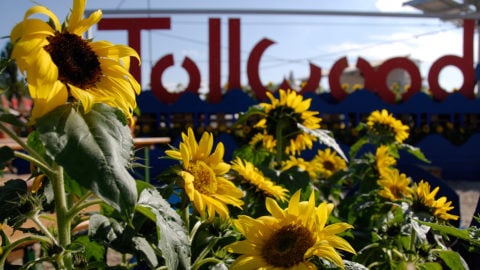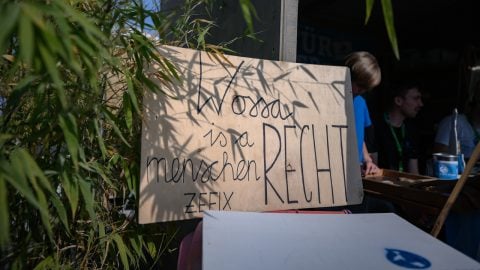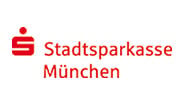Environmental place of action: Summer Festival 2024
True Cost Garden
HoMaBiLe – the true cost of food
True Cost Garden invites you to lean back, eat, drink and interact. It’s the place where vegetables, herbs and information grow and prosper. Join an interactive journey of discovery. How, for instance, do our daily purchase decisions influence our biodiversity? Find out more in our True Cost Garden.
Design and construction: Veronika Angloher
Experience research
What’s the price tag for our society when utilizing pesticides or greenhouse gas emissions in livestock farming? Is there a difference between conventional and ecological agriculture? And how can we save costs on such? The research project “How much is this dish? – Measures to increase biodiversity through true cost accounting of foods“ (HoMaBiLe) has unveiled the true cost of our food. For more than three years a team from Greifswald University has been researching the topic with Tollwood supporting its cause and bringing their research to the public eye as an active partner.
These results have been presented interactively to the audience of our previous festivals. Installations such as “HoMaBiLe Bistro“ or “Tante Emma’s True Cost Shop“ have made the scientific research tangible. The project was presented at conventions such as BIOFACH in Nürnberg. The project, funded by the Federal Ministry of Education and Research, will come to an end this September. The topic has reached social discussions and the HoMaBiLe project has made a valubable contribution to the cause.
One thing is for certain: We cannot carry on like this as it is too high of a price to pay.
Soil in danger
Cause
Chemical-synthetic fertilizers, too much liquid manure and pesticides lead to the acidification of soil. Furthermore, land-use changes like the deforestation of (rain) forests in order to cultivate monocultures, impact the soil quality.
Problem
We are dependent on healthy soil to perpetuate the natural resource cycle of our planet and produce high-quality foods. Unhealthy soil produces less yield and results in higher societal costs due to crop failures.
Solution
More legumes and wholegrain instead of meat on the menu! The reduction of animal-based products helps to avoid deforestation and monocultures for the cultivation of animal feed. If it is also organically produced, you help protect the soil even more because: organic agriculture renounces the use of artifical fertilizers and pesticides.
What does that have to do with biodiversity?
Soil is a habitat! If its quality diminishes, species living in and on it are in danger. Plants grow poorly, animals find less food and entire ecosystems lose their balance.
What do you think: how do the dishes displayed perform in relation to the issue?
A changing climate
Cause
In the course of food production, greenhouse gases are being emitted. Such examples are the transport of crops from farms to retailers or the heating of greenhouses. Particularly large amounts of greenhouse gases are emitted in the process of the production of animal-based foods.
Problem
In total, humanity is responsible for the emission of far too many greenhouse gases that impact the climate. The resulting issue: global warming that is happening unusually fast. As a part of this, we experience more frequent extreme weather events like droughts and flooding, that endanger and destroy habitats and cause enormous costs.
Solution
Eat mostly plant-based as well as regional and seasonal products! Because shorter routes of transportation, unheated greenhouses and outdoor cultivation, the omission of cooled-down storage spaces and less animal products on the menu: all of the above reduce the emission of greenhouse gases.
What does that have to do with biodiversity?
Climate change alters the living conditions of both animals and plants. Species that cannot adapt to these changes go extinct. And their disappearance has serious consequences for the ecosystem’s functioning.
What do you think: how do the dishes displayed perform in relation to the issue?
Health at stake
Cause
Conventional agriculture greatly relies on the use of pesticides for crop protection. Factory farming applies antibiotics to suppress diseases in the confined spaces these animals are raised in.
Problem
The consequences of contact with pesticides range from skin irritations to even affecting the DNA. Antibiotics make their way into our bodies with the consumption of meat and can result in the development of resistances. This causes enormous costs in the health care costs.
Solution
Enjoy plant-based food from organic agriculture! Here, pesticides and antibiotics are not or only very limitedly utilized.
What does that have to do with biodiversity?
Although pesticides target specific insects, plants and fungi, they also pose a threat to those who are not supposed to be endanger, like wild bees, butterflies and other insects. Diseases spread more easily and impair the ability to adapt to changing habitats.
What do you think: how do the dishes displayed perform in relation to the issue?
Water in danger
Cause
Phosphorus and Nitrogen in fertilizers and liquid manure induce an excess of nutrients in bodies of water. Pesticides poison waterbodies in the course of time.
Problem
Aquatic habitats change, which endangers the long-term survival of residing species. Cleaning polluted bodies of water and rebalancing ecosystems requires a lot of effort as well as money.
Solution
Support organic agriculture by buying organic products and reduce your consumption of conventionally farmed foods.
What does that have to do with biodiversity?
Clean water is the basis for all life on earth. An excess of nutrients facilitates the growth of algae which then displaces other species and, in the end, causes the ecosystem to collapse.
What do you think: how do the dishes displayed perform in relation to the issue?
Problems in today’s agricultural practices
Pesticides overuse of fertilizers and factory farming aim for the highest yield and lowest costs possible. But these practices have a massive and mostly negative impact on our environment as well as society. Pesticides cause diseases, monocultures deprive soils of nutrients. Furthermore, agriculture is responsible for one quarter of global greenhouse gas emissions, three quarters of global deforestation and has the highest consumption of freshwater. With these practices, modern conventional agriculture endangers the planet’s biodiversity: it accounts for 70% of loss of biological terrestrial diversity and 50% of loss in aquatic habitats.
Diversity is life! Why we need biodiversity
Biodiversity means diversity and variability of life. Apart from the often called-to diversity of species, this includes the genetic diversity within a species as well as the diversity of ecosystems. The genetic diversity of species improves their adaptability and survivability in the face of environmental changes and supports the long-term stability of ecosystems. Ecosystems are complex unities of animate and inanimate environments, whose components are all equally vital for the system’s function. If parts of the system are damaged or destroyed the entire ecosystem can collapse.
What is True Cost Accounting?
The production of food has a societal and ecological impact and causes costs. These are not yet added to the sales price, but externalized. That means: society and the following generations have to bear the consequences and account for these costs. True Cost Accounting (in short: TCA) is a scientific method for calculating the true costs of food products. Environmental consequences are identified with aid Life Cycle Assessments and converted in monetary values, that are closer to the actual price of a product. Four main categories provide a basis: health, climate, soil and water.
Protecting biodiversity with True Cost Accounting
True Cost Accounting shows transparently in what way consequential costs differ depending on the food group, form of agriculture and method of cultivation and points out which nutritional styles protect or damage biodiversity. Thereby consumers are enabled to make more sustainable decisions when shopping, and furthermore, politics, businesses and agriculture can implement measures to preserve and protect biodiversity.
How much is the dish? – The HoMaBiLe project
„How much is the dish? – Maßnahmen zur Erhöhung der Biodiversität durch True Cost Accounting bei Lebensmitteln“ (HoMaBiLe; in Englisch: Measures for enhancing biodiversity with True Cost Accounting for foods) is a project of Tollwood and the University of Greifswald. It points out the true costs of our food and raises awareness for the damage caused by food production. The project is running from October 2021 to September 2024 and is financially supported by the Federal Ministry of Education and Research. The scientists work the methodology and calculation of the true costs of food as well as the answer to the question: how is it possible to include environmental consequential costs in the prices in a socially equitable fashion?
Tollwood mirrors the scientific results with aid of interactive educational formats and opportunities to society. Additionally, with the project “Bio für Kinder” (“Organic for Children”) Tollwood supports the transistion of kindergartens and schools to a more sustainable, healthy and tasty catering (www.biospeiseplan.de). Here, the scientific insights are put into use directly.
Additional information under: https://www.tollwood.de/projekt-homabile/
Planetary Health Diet
The Planetary Health Diet describes a style of nutrition that is both good for the human body and the planet. It includes lots of vegetables and very little to no animal products. If this diet became the new normal, we would be doing ourselves and our environment a long-term favour.
What does True Cost Accounting identify?
- The usage of pesticides in agriculture
- So-called “true costs”
- The water quality in Bavaria
Climate section: Which dish helps to protect our climate?
- Potato soup
- chicken soup
- semolina soup
Health section: Which health threatening substances can be contained in meat?
Water section: Which form of agriculture helps to protect our water supply?
Soil section: Which of these dishes or their main component cause deforestation?
- Pasta with vegetable-omelet
- Beef steak with carotts and mashed potatoes
- Lentil-tomato-curry with rice
Which of these benefit biodiversity? (multiple answers possible)
- Organic agriculture
- A plant-based diet
- Regional-seasonal cultivation of crops












